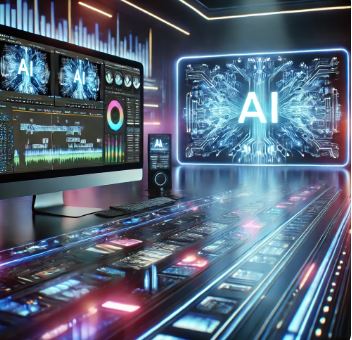
In the digital era, video content has become the cornerstone of online communication, advertising, education, and entertainment. As we navigate through 2024, a dramatic shift is underway, driven by the rise of AI-powered video editing tools. These innovations promise not only to streamline workflows but also to augment creativity, making video editing faster, more intuitive, and accessible to creators of all skill levels. This article delves into the most exciting AI advancements in video editing, discusses their impact, and makes bold predictions for the future.
AI’s Impact on Video Editing Today
AI video editing tools are already transforming the creative process in profound ways. The complexity of editing—previously reserved for seasoned professionals—has now been simplified, offering enhanced capabilities to even non-experts. Here’s how AI is reshaping the landscape:
1. Automated Video Editing
AI-powered platforms like Magisto and Lumen5 have democratized video creation by enabling users to produce high-quality videos with minimal effort. These tools analyze content, select the most relevant parts, and automatically add transitions, effects, and even background music based on the video’s theme.
2. Advanced Scene Detection
Gone are the days of manually scrubbing through hours of footage to identify key moments. AI algorithms can now detect important scenes, cuts, and emotional beats, significantly speeding up the editing process. Tools like Adobe Sensei are leading this innovation by recognizing patterns and visual cues that aid editors in making better decisions.
3. AI-Powered Color Grading
Color grading is a crucial step in video post-production, enhancing the mood and tone of a video. AI tools like ColorLab AI use machine learning to analyze footage and automatically adjust color balance, exposure, and contrast in real time, ensuring a visually consistent output without human intervention.
4. Enhanced Special Effects
AI is taking special effects to the next level by simplifying complex tasks such as rotoscoping, object removal, and background replacement. Programs like RunwayML allow creators to easily generate high-quality effects that were once achievable only by experts in expensive studios.
5. Real-Time Rendering
Rendering, one of the most time-consuming tasks in video production, is being revolutionized by AI. Tools equipped with machine learning can process visual effects and graphics far more efficiently, cutting rendering times down dramatically and allowing editors to work in real-time environments.
The Future of AI-Powered Video Editing: Bold Predictions
As AI continues to evolve, the potential applications in video editing are limitless. Here are some of the most exciting predictions for the next five years:
1. Real-Time Multilingual Dubbing
Within the next few years, AI could eliminate the need for post-production dubbing. Advanced algorithms will soon be able to automatically translate and sync voiceovers into multiple languages in real-time, revolutionizing global content distribution. Imagine releasing a single video that simultaneously caters to diverse linguistic audiences, with perfect lip-syncing and tone matching.
2. Emotion-Driven Editing
AI will soon not only identify key moments in a video but also detect the emotional undercurrents of each scene. By analyzing facial expressions, tone of voice, and ambient elements, AI tools will recommend editorial choices that enhance emotional engagement, ensuring that the final cut resonates deeply with viewers.
3. AI-Assisted Storytelling
Storytelling is at the heart of video production, and AI will soon play a pivotal role in the creative process. By analyzing scripts, plot structures, and audience preferences, AI will assist directors and editors in crafting more compelling narratives, providing suggestions for pacing, shot selection, and transitions.
4. Hyper-Personalized Content
With advancements in AI personalization, future video content will be tailored to individual viewers based on their preferences, viewing history, and engagement data. This could lead to a scenario where a single film or advertisement is customized in real-time for each viewer, enhancing their connection to the content.
5. AI-Driven Live Editing
Imagine a future where AI handles live editing during major broadcasts—be it sports events, concerts, or news reporting. AI-powered systems will analyze live feeds, automatically switching between the best camera angles, applying filters, and adjusting audio, creating a polished final product without human intervention.
Sample Calculation: Time and Cost Efficiency of AI Tools
Consider a traditional editing workflow for a 30-minute video, which might take an editor 10 hours to complete using standard tools. With the aid of AI-powered tools, the same task could be reduced to just 3 hours. Here’s a sample calculation:
- Traditional Editing Time: 10 hours
- AI-Assisted Editing Time: 3 hours
- Time Saved: 7 hours (70% reduction)
On the cost side, assuming an editor charges $50/hour, the traditional cost would be $500, while with AI assistance, it would drop to $150—yielding a savings of $350.
Predictions: 2030 and Beyond
By 2030, the video editing landscape will look entirely different. AI will likely take over many routine tasks, allowing creators to focus on the artistic aspects of their projects. Additionally, as AI models become more sophisticated, the quality of AI-driven edits will rival that of human editors. We can expect:
- AI-powered fully autonomous filmmaking systems, capable of scriptwriting, directing, and editing with minimal human oversight.
- Real-time audience feedback loops will allow for instantaneous changes to live-streamed content, driven by viewer sentiment and engagement data.
- Deep-learning AI algorithms will integrate with VR and AR technologies, allowing for immersive, interactive video experiences where viewers can influence the narrative.


